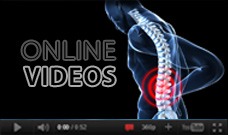Cervical Laminectomy
Cervical laminectomy is a surgical procedure involving the removal of a small portion of the lamina, the bone forming the roof of the spinal canal, to relieve pressure over the spinal cord due to cervical stenosis. Cervical stenosis is a spinal condition characterized by narrowing of the spinal canal in the neck. Cervical laminectomy is indicated in patients with cervical stenosis associated with myelopathy (compression of spinal cord). Myelopathy causes intolerable neck and arm pain with weakness in the arms and legs that may affect the fine motor skills of the hands as well as cause disturbances in gait and balance. In rare cases it may even cause loss of bowel or bladder function or paralysis.
Wear and tear of the spine due to repetitive movements and ageing result in degenerative changes which include thinning of the intervertebral discs, formation of bone spurs, disc herniation and thickening of the ligaments. The thinning of the disc results in reduction in the space between the vertebrae and may cause buckling of the posterior longitudinal ligament, attached at the back of the vertebrae, resulting in compression of the spinal cord. The bone spurs, herniated disc and thickened ligament may protrude into the spinal canal and exert pressure over the spinal cord leading to myelopathy.
Procedure
Cervical Laminectomy is performed under general anesthesia. The patient lies face down on the operating table and the head is fixed in position with a special device called Mayfield. A vertical incision is made over the neck, in the mid-line. The neck muscles are retracted and the cervical spine is exposed for the surgery. A hinge is created by partially cutting through the lamina on one side and completely through the other side. The lamina is then moved away by moving it at the hinge. This creates more space for the spinal cord, as one side of the lamina is open like a flap. The small portion of the bone cut, to create the hinge, heals gradually. The procedure is usually done with the help of a surgical microscope which magnifies the working area, improving visualization. The disc material, thickened or buckled ligament and any bone spur near the spinal cord are carefully removed using small cutting instruments. This relives the compression over the spinal cord. The muscles and soft tissues are then repositioned and the incision is sutured.
Patients are usually discharged a day after the surgery. The pain in the arm is significantly reduced after the procedure. However, arm numbness may take some time to resolve, following the surgery.
After the surgery
Slight pain around the incision site and spasms of the neck muscles are common and usually resolve within a week of the surgery. The incision should always be kept clean and dry. The bandaged area should be covered properly to prevent it from getting wet, especially while bathing. Patients are advised to avoid lifting, bending or twisting of the neck for four to six weeks after the surgery. The patient may be advised to wear a neck brace. The patient may resume work, with some restrictions, as early as two to four weeks after the surgery.
Risks and complications
The risks associated with cervical laminectomy are low but may include infection, bleeding, nerve damage, spinal cord injury and leakage of spinal fluid.
|











